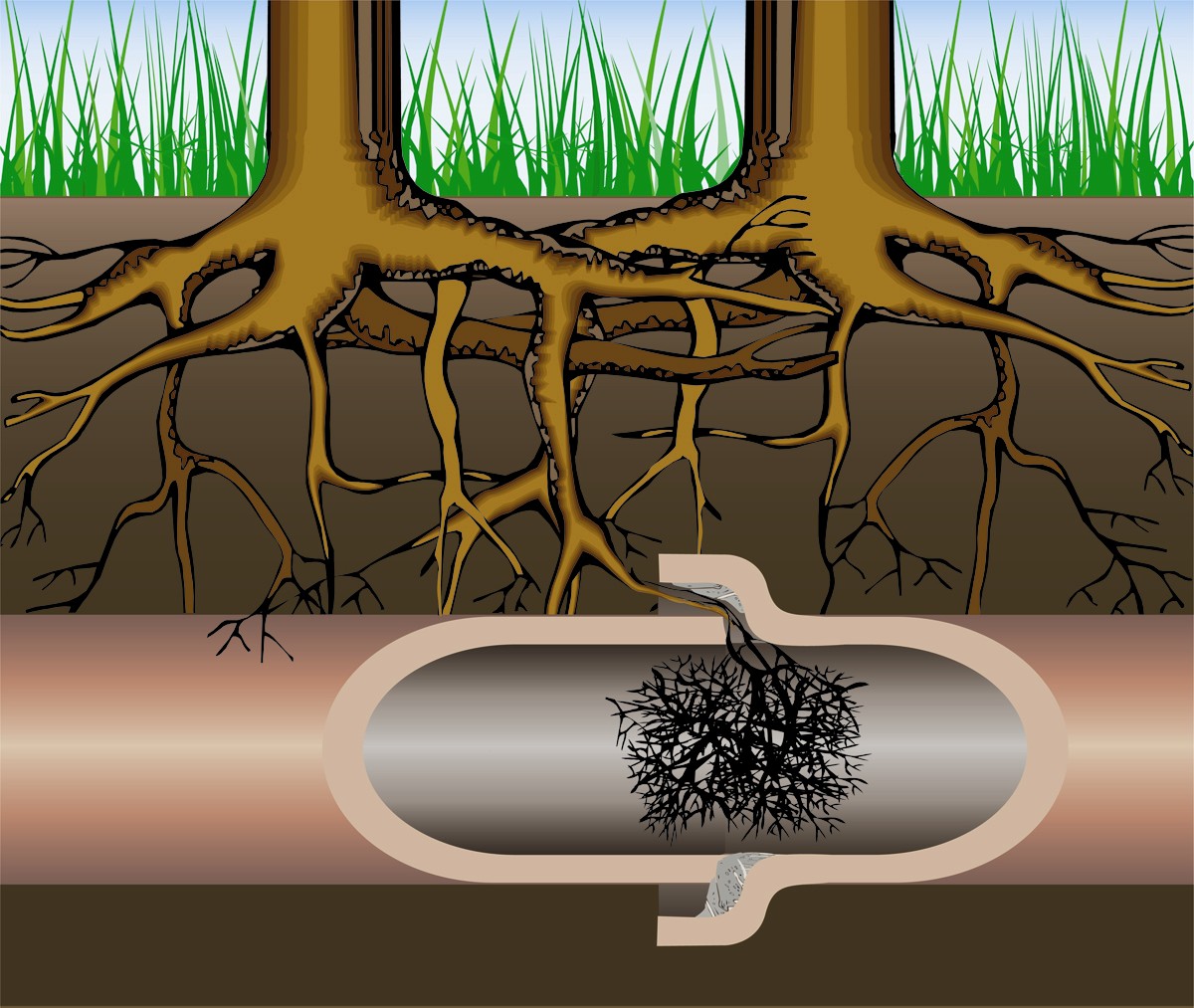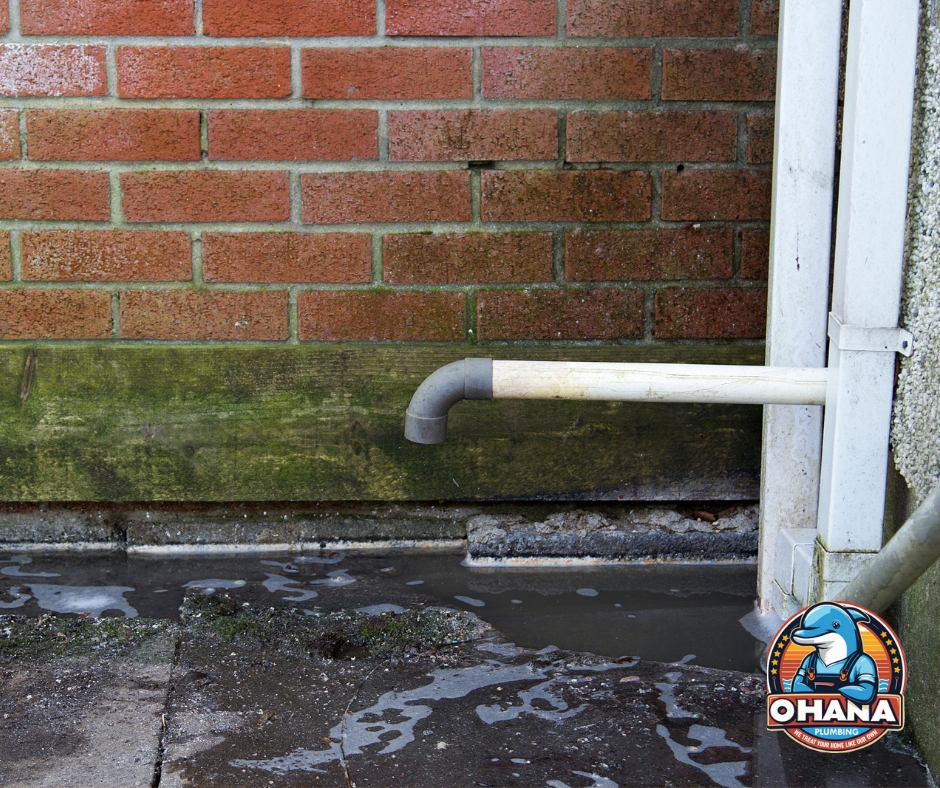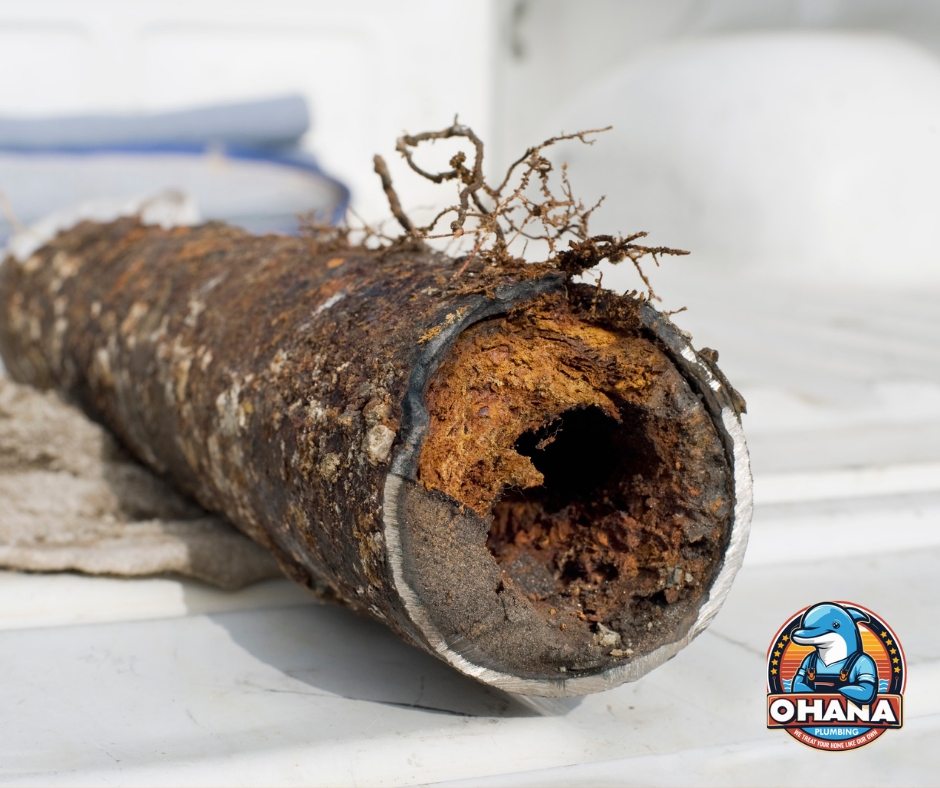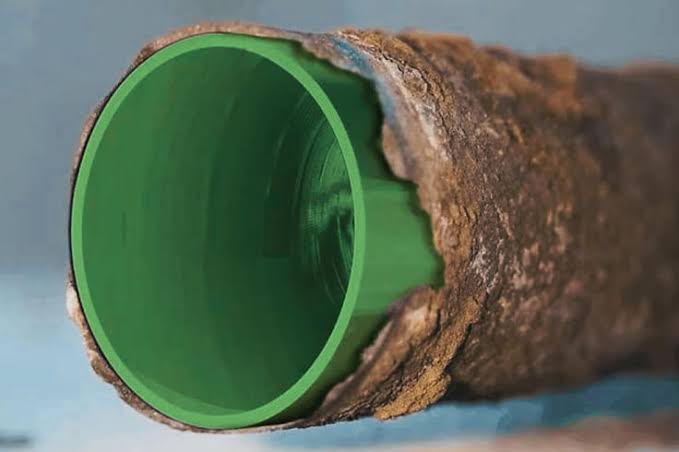Tree roots and plumbing don’t mix well. What may seem like a harmless, beautiful tree in your garden can, over time, cause significant damage to your home’s plumbing system. Tree roots naturally seek out moisture, and your underground pipes are a prime target, leading to severe blockages, leaks, and costly repairs if left unchecked. At Ohana Plumbing, we’ve seen firsthand how invasive tree roots can wreak havoc on a plumbing system, and we’re here to help you understand what to look out for and how to prevent it.
Why Do Tree Roots Invade Pipes?
Tree roots are drawn to underground plumbing pipes for one simple reason—water. As trees grow, their root systems spread wide and deep in search of moisture to support the tree’s growth. If your pipes have even the smallest crack or joint separation, they can leak water into the surrounding soil. This attracts tree roots, which then find their way into the pipes, leading to blockages and damage.
Common causes of tree root invasion include:
- Old or Damaged Pipes: Older pipes, particularly clay pipes, are prone to cracking or joint separation, making them more vulnerable to root intrusion.
- Small Leaks: Even tiny leaks in your pipes can release enough moisture to attract tree roots, which then grow into the pipe through any gaps or cracks.
- Proximity to Trees: Trees planted close to your plumbing system are more likely to cause issues, especially species with aggressive root systems, like willows, oaks, and ficus trees.
Signs of Tree Root Invasion
Tree root intrusion doesn’t happen overnight, but there are some telltale signs that your pipes may be under attack:
- Slow Draining Water: If you notice that water is draining slower than usual in sinks, tubs, or toilets, tree roots could be partially blocking the flow of water in your pipes.
- Frequent Blockages: Recurring blockages that don’t seem to have an obvious cause could indicate tree roots growing inside your pipes, disrupting water flow and causing clogs.
- Unpleasant Odors: A blocked or damaged sewer line due to tree roots can cause foul smells to back up into your home.
- Soggy Patches in Your Yard: If tree roots have caused a break in your pipe, you may notice unusual wet patches or even sinkholes in your yard due to water leaking from the damaged pipe.
- Gurgling Noises: When tree roots block a pipe, it can create gurgling sounds in your drains as water struggles to flow past the obstruction.
How to Prevent Tree Root Invasion
Preventing tree roots from invading your pipes requires a mix of proactive measures and regular maintenance:
- Strategic Tree Planting: When planting trees, avoid placing them too close to your plumbing system. Be mindful of tree species with aggressive root systems, which can grow toward your pipes in search of moisture.
- Routine Pipe Inspections: Regular plumbing inspections using a CCTV drain camera can help catch early signs of tree root intrusion or pipe damage, allowing you to address the issue before it becomes a bigger problem.
- Install Root Barriers: If you have trees near your plumbing system, installing root barriers can help redirect the growth of roots away from your pipes.
- Maintain Your Plumbing: Regular maintenance like drain cleaning and checking for leaks can help keep your pipes in good condition, reducing the chances of root intrusion.
Solutions for Tree Root Invasion
If tree roots have already invaded your pipes, there are several ways to address the problem:
- Hydro Jetting: Hydro jetting uses high-pressure water to blast away tree roots and debris from inside your pipes. This method is highly effective for clearing blockages caused by roots and other materials.
- Pipe Relining: If your pipes have been damaged by tree roots, pipe relining is a great option. This trenchless method repairs the pipe by inserting a new lining inside the existing pipe, sealing any cracks or gaps and preventing future root intrusion.
- Root Removal: In some cases, a professional plumber may use specialized cutting tools to remove tree roots from inside the pipe. However, this is usually only a temporary fix unless the pipe is repaired or relined afterward.
- Pipe Replacement: For severely damaged pipes, replacement may be the best option. Modern materials like PVC are more resistant to root intrusion than older clay or cast iron pipes, making them a longer-term solution.
Why Choose Ohana Plumbing for Tree Root Solutions?
At Ohana Plumbing, we understand that tree root invasion can be a frustrating and expensive problem. That’s why we offer professional, reliable solutions that get to the root of the issue—literally! Whether you need hydro jetting, pipe relining, or a full pipe replacement, our team of experienced plumbers has the skills and tools to get the job done quickly and efficiently, without causing unnecessary disruption to your property.
Our transparent pricing and commitment to customer satisfaction mean that you’ll always know exactly what to expect when you work with us. We take pride in helping our clients understand their plumbing system and how to protect it from future issues like tree root intrusion.
Conclusion
Tree roots can cause significant damage to your plumbing system if left unchecked. By understanding the signs of tree root invasion and taking proactive steps to protect your pipes, you can avoid costly repairs and keep your plumbing system in top condition. If you’re dealing with a blockage or suspect that tree roots are invading your pipes, don’t wait—contact Ohana Plumbing today for expert solutions. We’re here to help you get your plumbing back in shape and keep those tree roots at bay!









